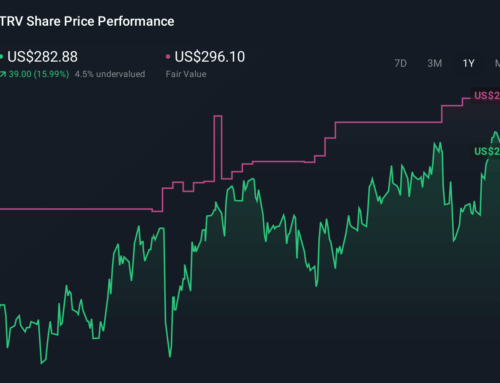Going Into Earnings, Is Apple Stock a Buy, a Sell, or Fairly Valued?
April 29, 2025
Apple AAPL is set to release its fiscal second-quarter earnings report on May 1. Here’s Morningstar’s take on what to look for in Apple’s earnings and stock.
• Fair Value Estimate: $200.00
• Morningstar Rating: ★★★
• Economic Moat: Wide
• Morningstar Uncertainty Rating: Medium
Earnings Release Date
• Thursday, May 1, after the close of trading
What to Watch for in Apple’s Fiscal Q2 Earnings
• iPhone revenue performance: iPhone revenue continues to be the biggest driver of Apple’s financial results. We expect a normal seasonal decline from the December quarter, which benefits from a new product release and the holiday season, but we do expect some modest year-over-year growth for iPhone revenue in the March quarter.
• Services growth: Services revenue is Apple’s next biggest driver, and we expect a continuation of strong double-digit growth in the March quarter.
• Tariff impact: Apple faces material tariff risk for iPhone sales in the United States. We will watch for how management frames its ability to manage tariffs and see if there is any pull-in of Apple’s imports from China in the quarter to get ahead of tariffs. We expect management to focus on manufacturing exposure elsewhere in Asia, but we remind investors the majority of iPhones are still manufactured in China.
Apple Stock Price
undefined
Fair Value Estimate for Apple
With its 3-star rating, we believe Apple stock is fairly valued compared with our long-term fair value estimate of $200 per share, which implies a fiscal 2025 price/earnings multiple of 27 times, a fiscal 2025 enterprise value/revenue multiple of 7 times, and a fiscal 2025 free cash flow yield of 4%. Against our estimate of fiscal 2026 earnings, our valuation implies a price/earnings multiple of 23 times.
We project 7% compound annual revenue growth for Apple through fiscal 2029. The iPhone will be the greatest contributor to revenue over our forecast, and we project 6% growth for iPhone revenue over the next five years. We expect this to be driven primarily by unit sales growth, with modest pricing increases. We think pricing increases will be driven primarily by a mix shift toward the more premium Pro models.
Read more about Apple’s fair value estimate.
Economic Moat Rating
We assign Apple a wide economic moat rating, stemming from customer switching costs, intangible assets, and a network effect. In our view, Apple’s iOS ecosystem extends far-reaching, sticky tendrils into customers’ wallets, entrenching customers with software capabilities and integration across disparate devices like the iPhone, Mac, iPad, Apple Watch, and more.
We also see immense design prowess at Apple, most impressively from deep integration of hardware, software, and semiconductors to create best-of-breed products. Finally, we see a virtuous cycle between Apple’s affluent customer base and vast ecosystem of developer partners. These moat sources elicit great profitability and returns on invested capital. In our view, Apple can leverage these moat sources into continued economic profits over the next 20 years, more likely than not.
Read more about Apple’s economic moat.
Financial Strength
We expect Apple to focus on using its immense cash flow to return capital to shareholders while increasing its net leverage over the medium term. Apple has a terrific balance sheet, with a net cash position of $50 billion as of September 2024. Management has laid out a goal to become cash neutral eventually, with no set timetable. We model it to hit this target near the end of the decade. Since announcing the goal in 2018, Apple has reduced its net cash position by more than half, from over $100 billion.
Read more about Apple’s financial strength.
Risk and Uncertainty
We assign Apple with a Medium Uncertainty Rating. We see the firm’s greatest risk as its reliance on consumer spending, for which there is great competition and cyclicality. Apple is at constant risk of disruption, just as the iPhone disrupted BlackBerry in the budding smartphone market. The iPhone could be unseated by a new device or “superapp.” We view the firm defending against this risk, however, by introducing new form factors (like a watch and an augmented reality headset) and selling an ecosystem of software and services on top of hardware.
We also see geopolitical risk arising from Apple’s supply chain. It is heavily dependent on Foxconn and Taiwan Semiconductor, or TSMC, for its assembly and chip production, respectively. The majority of iPhones are produced at a megafactory in China by Foxconn, and the majority of Apple chips are produced in Taiwan by TSMC. If there were a souring of relations between the US and China, or if China threatened Taiwan, Apple could see a severe hit to its supply. Additionally, the Chinese government has recommended government officials not conduct business on iPhones, which presents a current and potential future risk to Apple’s revenue in China.
Read more about Apple’s risk and uncertainty.
AAPL Bulls Say
• Apple offers an expansive ecosystem of tightly integrated hardware, software, and services, which locks in customers and generates strong profitability.
• We like Apple’s move to in-house chip development, which we think has accelerated its product development and increased its differentiation.
• Apple has a stellar balance sheet and sends great amounts of cash flow back to shareholders.
AAPL Bears Say
• Apple is prone to consumer spending and preferences, which creates cyclicality and opens the firm up to disruption.
• Apple’s supply chain is highly concentrated in China and Taiwan, which opens up the firm to geopolitical risk. Attempts to diversify into other regions may pressure profitability or efficiency.
• Regulators have a keen eye on Apple, and recent regulations have chipped away at parts of Apple’s sticky ecosystem.
This article was compiled by Gautami Thombare.
The author or authors do not own shares in any securities mentioned in this article. Find out about Morningstar’s editorial policies.
Search
RECENT PRESS RELEASES
Related Post



